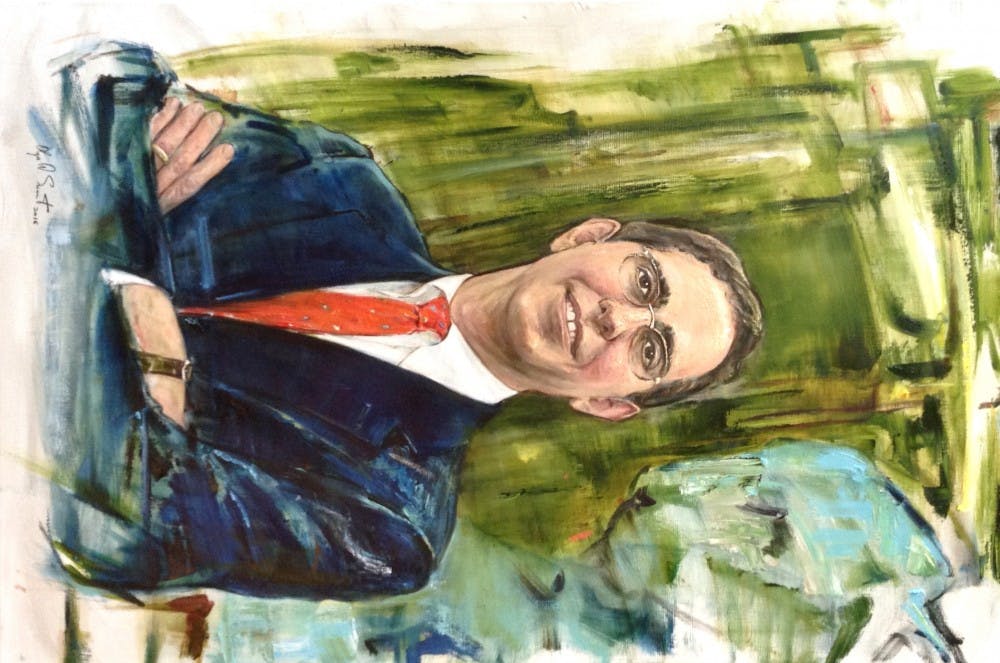Since its advent in the 19th century, photography has become increasingly prevalent in people’s daily lives, pushing traditional modes of representation such as portraiture into relative obscurity. However, the world’s interest in the latter art form has not diminished, according to Moscow-born painter Olga Sweet who currently lives in the town of Princeton. She has recently done a portrait of President Obama that was presented in the White House; her other clients include President Carter, Nacho Figueras (the renowned polo player and Ralph Lauren model), and Princeton University’s President Christopher Eisgruber.

“My love for portraiture comes from my fascination with human beings — our happiness, sadness, drive to succeed, and feelings of failure, fairness, and love,” Sweet said.
Sweet is particularly drawn to people’s faces, and sees them as snapshots of individuals’ lives. Unlike traditional portraits that often depict aristocrats or royals who had the financial means to be patrons, Sweet’s portraits do not distinguish the socioeconomic status of their subjects. She wants to portray not only the accomplished, but also the ordinary, believing that there are interesting and unusual aspects to be discovered in each individual. She tries to make all her portraits — whether of Presidents or studio models — equally full of life, feelings, and desires.
According to Sweet, before she paints, her first step is to find out what she wants to say about this person through the portrait, which requires getting to know her subject to some degree. Sometimes she accesses this knowledge simply by looking into a person’s eyes. Sweet noted that “without speaking you can know a lot about a person.” She said that she could spend hours painting a person without exchanging any words, but really feeling a strong sense of connection with them.

In some ways, our bodies — their perception and expression — are more powerful mediums of communication than spoken languages, according to Sweet. She adds that in the studio bodies change over time — since human models cannot remain stationary for a prolonged period of time. Therefore, artists need to be sensitive about human form and movement, when depicting it in their paintings.
The models themselves are not the only source of change; the artist puts her feelings into what she sees, and alters her perception subtly to convey her ideas (i.e. what she wants to say about the subject of her painting, as aforementioned). According to Sweet, this is the main distinction between portraits and photography. While photography captures life as it is, she frequently manipulates colors, focal points, and proportions, as well as elongates distances and creates different backgrounds.
Rejoicing in this freedom to change what she wants in order to express her impression of the subject, Sweet also warned that one must be careful when doing so; there needs to be a line, albeit often blurred, between the painter’s subjective experience and the objective physicality of the subject.
Sweet recalled another of her most memorable paintings — that of President Eisgruber. “When we first moved to Princeton, my 17-year-old son challenged me to depict President Eisgruber,” she narrates, “my son was very impressed with his speech, its eloquence, depth, and passion."
At that time, I had just completed my portrait of Dr. Frances Fergusson, the President Emerita of Vassar College, so my son suggested, ‘why not paint another university President?’” Sweet was initially hesitant about this idea, yet after hearing one of President Eisgruber’s speeches, she found herself “astonished and fascinated”b y him.

She perceived the vivacity and modernity of his mind, and strived to make his portrait as bright, deep, and contemporary as she saw him, by using vivid colors and contemporary approaches to painting. Though she has never met President Eisgruber one-on-one, Sweet has listened to a multitude of his speeches, and thinks of him as a remarkable character. “I would very much like to learn what President Eisgruber thinks of my portraits of him,” Sweet repeatedly said.
When asked about the most important skill in producing a good portrait (her secret to success, so to speak), she pointed again towards her ability to capture a person quickly and deeply. “I get a sense of their personality by simply looking into their eyes and listening to what they say,” Sweet remarked. Technical skills are indispensable, but what is even more crucial is to be observant, and to see a person for what he or she really is.
As she later acknowledges, there are multiple different sides to each individual; “an incarcerated person can also be a great tennis player, or a tender mother…" She says that her job as a painter is to choose what parts of a person to highlight.
Sweet is also devoted to humanitarian endeavors, as she says, “giving back has always been important to me." Many of her portraits have been auctioned at the benefits of the New York Junior League, Southampton Hospital, the American Red Cross of Greenwich, the Princeton Symphony Orchestra, and various other nonprofit organizations. Currently, she is looking forward to participating in a project that aims to give Princeton a more diverse iconography (under a committee that was formed on the recommendation of the Wilson Legacy Review Committee).
Sweet remarked that many portraits on campus lack diversity, and she hopes to better portray underrepresented groups of people at Princeton and beyond. As a mode of representation, portraits help describe and define notions of identity; by looking into the eyes of a portrait we can have the same 'Sweet' recognition of the beauty of another person.








